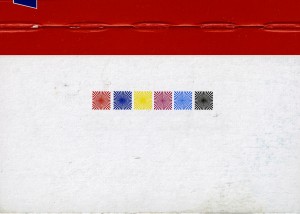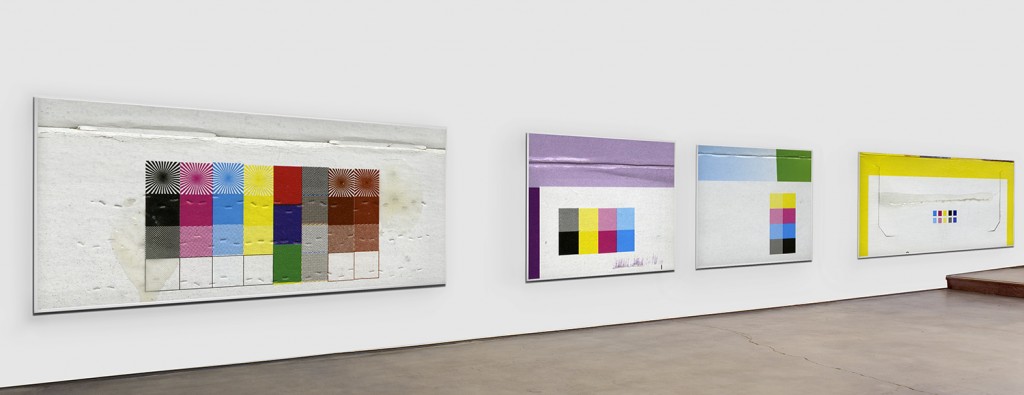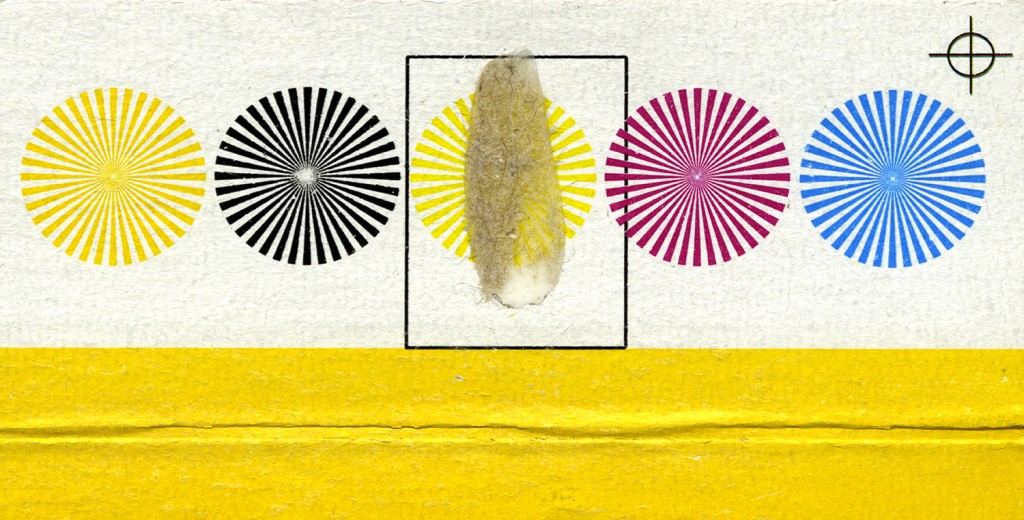This is the ninth in a series of interviews with each of the Sondheim Award Semifinalists. Finalists will be announced in mid-April, and will be on exhibit at the Walters Art Museum June 21 to August 17; those not selected as finalists with be exhibited at the Decker, Meyerhoff and Pinkard Galleries at MICA July 17 to August 3, 2014.
Name: Dean Kessmann
Age: 49
Website: www.deankessmann.com
Current Location: Washington, DC
Hometown: Maryville, IL
School: Southern Illinois University at Carbondale (MFA)
Current favorite artists or artwork: James Welling, Wade Guyton, Peter Coffin, Jennie C. Jones, Tom Friedman, N. Dash, Louis Cameron, and three artists who I’ve been close friends with for around two decades and whose work I greatly admire: Martin Brief, Jill Downen, and Jennifer Dorsey (my wife). There are many, many artists in the DC metro area whose work I love and respect, but it is difficult to list a few of them without feeling horrible about not included all of the others.
What is your day job? Associate Professor and Deputy Chair of the Department of Fine Arts and Art History at The George Washington University.
How do you manage balancing work with studio time with your life? Unfortunately, I do a terrible job at balancing work with studio time and family time.
How would you describe your work, and your studio practice? Below is my one paragraph artist statement, which I find difficult to write because I often fail to see connections and/or differences between much of my work.
Studio visits are incredibly helpful in this regard, that is, getting fresh eyes and new perspectives on work that I’m generally too close to, thus difficult to see in an objective manner. Here goes: What remains consistent throughout my practice is an intense interest in the relationships between abstraction and representation, physical objects and digital information, compression and expansion. Each new project builds upon and expands my larger body of work, while at the same time folding into it. My goal is to create fresh iterations that fuse the lessons learned with happenstance that is part and parcel of the creative process.
The intuitive impulse in my practice is balanced with a more critical and reasoned approach. If one looks closely at the subtle twists and turns that have led me from one project to the next, I hope that it is apparent that my meandering is with purpose. I strive to create work that is intellectually engaging and visually striking, open to multiple interpretations without being overly ambiguous, smart and challenging without becoming pretentious or abstruse. While my choice of media is, at times, made for practical purposes, these decisions are, more often than not, arrived at for conceptual reasons because materials have meaning.
What part of artmaking do you like or enjoy the most? The moment when it becomes apparent, at least to me, that project that I’d been thinking about doing for a while is likely going to result in work that is both visually compelling, and hopefully, conceptually engaging. I also enjoy seeing the finished work up on a wall. There is time spent between the beginning and end of projects that I find rewarding and exciting, but I tend to work out many details in my head prior to actually starting to make the pieces, so making the work sometimes feels like, well, work. My training as a traditional black and white photographer taught me to pre-visualize the final print at the time of exposure, which, for better or worse, has spilled over into my current practice.
What part of artmaking do you like or enjoy the least? Promoting the finished work is the least enjoyable to me. Sadly, due to the serial nature of many of my projects, there can be a certain level of monotony between the early stages of making a piece and getting to the final result, as was alluded to in my last answer. However, this time spent doing repetitive kinds of tasks does, on occasion, allow for a project to evolve in unexpected ways, or at the very least, it opens up some mental space to think about the meaning of the work.
What research do you do for your art practice? As an associate professor at GW my ongoing interactions with students and other faculty members certainly feeds into my practice as an artist. I look at as much art as possible, which has been somewhat difficult the last few years due to administrative duties associated with my job at GW . . . I was Chair of the Department of Fine Arts and Art History from July 1, 2010 to June 30, 2013, and I’m now serving a one-year term as Deputy Chair (and I have the badge to prove it-haha). Additionally, simply paying attention to what are generally perceived as fairly mundane activities and seemingly insignificant moments that make up much of our day-to-day lives often results in my discovering something worth exploring. For instance, the project that I submitted to the Sondheim Prize, titled Utilitarian Abstraction, began when I started paying attention to, and then collecting the tiny grids of colors and patterns on cardboard box flaps of food packaging. The actual purpose of these marks is to enable printers to match colors and ensure that the text and images remain in registration throughout the printing process. However, while disassembling these boxes in order to place them in the recycling bin, I became intrigued by the somewhat standardized, yet surprisingly unique imagery that I continued to discover. Shortly thereafter, I found myself imagining these utilitarian marks as miniature abstract paintings that had been hidden from view, smuggled into my home via the packaging of ordinary consumer products.
After scanning them, I dramatically enlarge the tiny source images, and then output them as archival pigment prints. For this project, breaking down boxes for the recycling bin became part of my research. Now that the project is well underway and the collecting has slowed down, I have obviously started thinking about this work in the context of historical precedents, especially Pop art, Op art, abstract monochromatic painting, and more recent trends in appropriation of imagery from contemporary consumer culture.
 What books have you read lately you would recommend? Movies? Television? Music? I’ve read and/or have been reading the following books: Contemporary Art: 1989 To The Present (Edited by Alexander Dumbadze and Suzanne Hudson), Living and Sustaining a Creative Life (Edited by Sharon Louden), James Welling: Monograph (James Crump), Wade Guyton: OS (Scott Rothkopf), and The Edge of Vision: The Rise of Abstraction in Photography (Lyle Rexer). My wife and I have been watching some of the academy awards winners online at home, since with two kids we rarely get to see anything on the big screen. We also just finished watching the HBO series True Detective. I’ve recently replaced a 20-year-old stereo and speakers with new components, so I’ve probably been spending the most time listening to music these days. I’ve been listening to Tame Impala (Lonerism), Arcade Fire (The Suburbs), Vic Chesnutt (At the Cut), Yo La Tengo (Fade), Animal Collective (Centipede HZ), Sigur Ros (Valturi), Wilco (The Album), and Stephen Malkmus & The Jicks (Real Emotional Trash), among others.
What books have you read lately you would recommend? Movies? Television? Music? I’ve read and/or have been reading the following books: Contemporary Art: 1989 To The Present (Edited by Alexander Dumbadze and Suzanne Hudson), Living and Sustaining a Creative Life (Edited by Sharon Louden), James Welling: Monograph (James Crump), Wade Guyton: OS (Scott Rothkopf), and The Edge of Vision: The Rise of Abstraction in Photography (Lyle Rexer). My wife and I have been watching some of the academy awards winners online at home, since with two kids we rarely get to see anything on the big screen. We also just finished watching the HBO series True Detective. I’ve recently replaced a 20-year-old stereo and speakers with new components, so I’ve probably been spending the most time listening to music these days. I’ve been listening to Tame Impala (Lonerism), Arcade Fire (The Suburbs), Vic Chesnutt (At the Cut), Yo La Tengo (Fade), Animal Collective (Centipede HZ), Sigur Ros (Valturi), Wilco (The Album), and Stephen Malkmus & The Jicks (Real Emotional Trash), among others.
Do you ever get in creative dry spells, and if so, how do you get out of them? These days I rarely get in creative dry spells because it is difficult for me to find enough time to complete the projects that I have underway. However, when this does happen, I simply carry a camera with me on my walks to and from work and make pictures of anything that I find even the least bit interesting. Most of these images never see the light of day, but they serve a more important purpose of getting me through the dry spells.
How do you challenge yourself in your work? Like most artist, I want my next project to be better than my last one. I try to make work that, to some extent, grows out of my overall practice as an artist, while simultaneously making subtle moves into new territory. Most recently, I’ve been making work at a significantly larger scale than anything I’ve done in the past. Some of the images in Utilitarian Abstraction are as large as 5 feet by 23 ½ feet. Also, I’m working on another project (A Layered History of Art: From Semitransparent to Opague) in which the final piece will be approximately 5 feet high by 40 feet long.
What is your dream project? Ask me in the morning.



